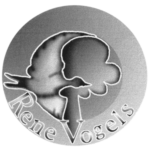Quantitative imaging in magnetic resonance
Alberto Traverso
School for Oncology and Developmental Biology (GROW), Maastricht University, Maastricht, The Netherlands
Goal of the visit: Computed Tomography (CT) and Magnetic Resonance (MR) are the standard imaging modalities for cervical cancer staging and evaluation of treatment response. MR imaging provides greater soft tissue contrast than CT and can embed potential additional quantitative information to support clinicians for treatment recommendations and evaluation. Quantitative information (‘features’) extracted from patients’ scans (‘radiomics’) and their analysis using AI (artificial intelligence) showed promising prognostic and predictive power, but mainly for other disease sites such as lung or head and neck cancers imaged with CT. With the intent to expand this research field to MR and to gynaecological cancers, I went to Princess Margaret Cancer Centre (PMH) at the department of radiation oncology. PMH is one of the biggest cancer centres in North America, with a commended effort to bring state-of-the art AI technologies in the clinic as decision support systems. The goals of my visit where: a) investigating the extension of (radi)-omics for cervical cancer using MRI-based images; b) increasing my clinical background by actively participating in clinical duties with the oncologists; c) creating a multidisciplinary environment for future collaborations.
Brief summary of results: We developed a methodology for evaluating the reliability and robustness of quantitative features extracted from MRI images of cervical cancer patients. The methodology revisited state-of-the art AI techniques based on machine learning. This allowed us reducing the complex high dimensionality of the problem to investigate the prognostic power of stable features. The scientific results were 2 publications, on just submitted, and 3 abstracts accepted for major international conferences. The methodology was also extended for other sites such as rectal and oral cavity cancers, where MR is the leading modality.
Personal impression: coming from a relatively small reality like Maastricht, the first impressive thing is how huge the reality was. All the hospitals are big towers, occupying a big surrounding of the town. It takes quite a bit not to get lost! Under the scientific point of view, I was really impressed by the strong bind between technology, healthcare and companies achieved through multidisciplinary teams working together in the clinic. In addition, Toronto is a very multicultural city, with excited generations coming all over the world to bring their knowledge. This reminds me a lot the Netherlands, on a larger scale. Finally, I survived the cold (temperatures reach also -40 degrees from January to March) by moving in the city and in between hospitals using one the largest underground walking networks (the PATH).
